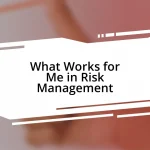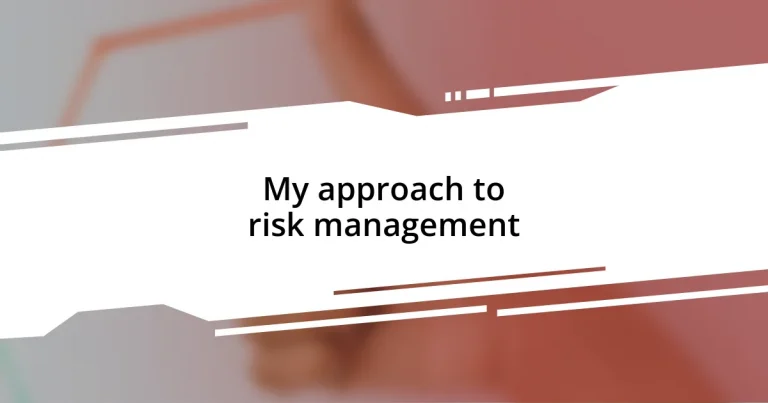Key takeaways:
- Effective risk management involves proactive assessment, communication, and a collaborative team approach to identify and prioritize risks.
- Developing a tailored risk management plan is essential, involving continuous updates and stakeholder engagement to address specific challenges.
- Implementing response strategies and monitoring risks fosters resilience and transforms challenges into opportunities for improvement.
- Continuous improvement through reflection and feedback enhances risk management practices, supported by data-driven insights and open communication.
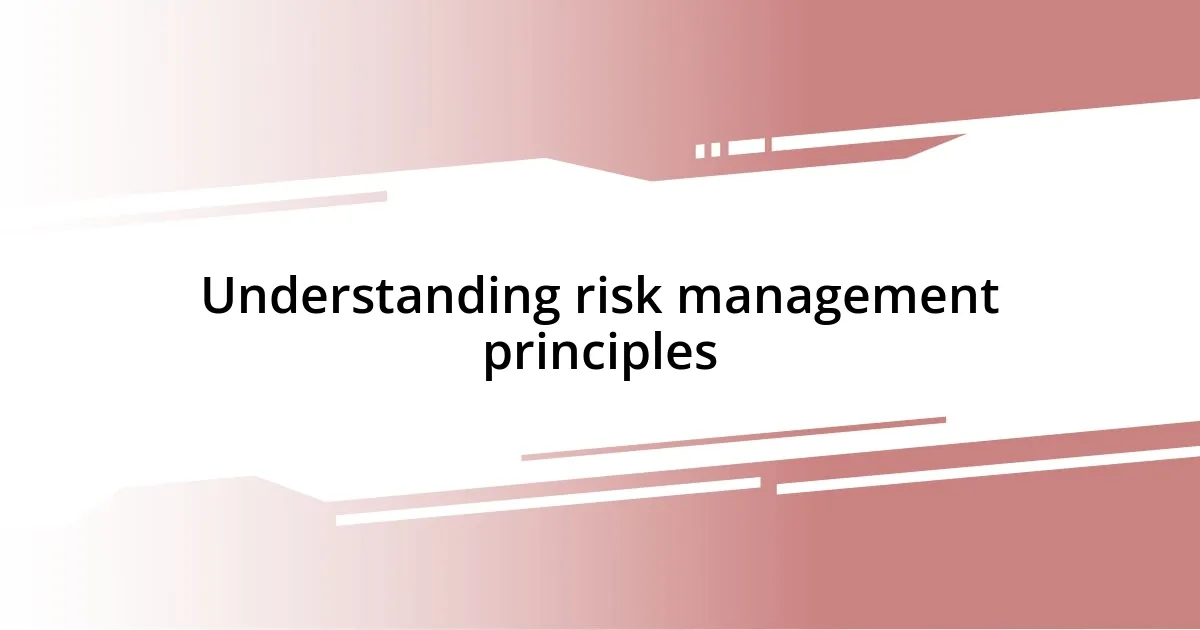
Understanding risk management principles
Understanding the principles of risk management involves recognizing that risk is inherent in every decision we make. I remember a time when I faced an unexpected challenge in a project. It taught me that I needed to assess potential risks ahead of time, allowing for proactive engagement rather than reactive scrambling.
At its core, risk management is about identifying, evaluating, and prioritizing risks. I find it fascinating how this process parallels everyday life. Have you ever considered how much planning goes into a simple family trip? We assess travel risks, weather forecasts, and even potential delays—each consideration helping us make informed decisions.
Communicating risks effectively is another key principle that often gets overlooked. In one of my previous roles, I realized that merely stating a risk isn’t enough; it’s essential to foster open dialogue about it. How often do we shy away from discussing potential pitfalls? By creating an environment where risks can be openly discussed, I have not only improved team dynamics but also enhanced our collective ability to manage risks more effectively.
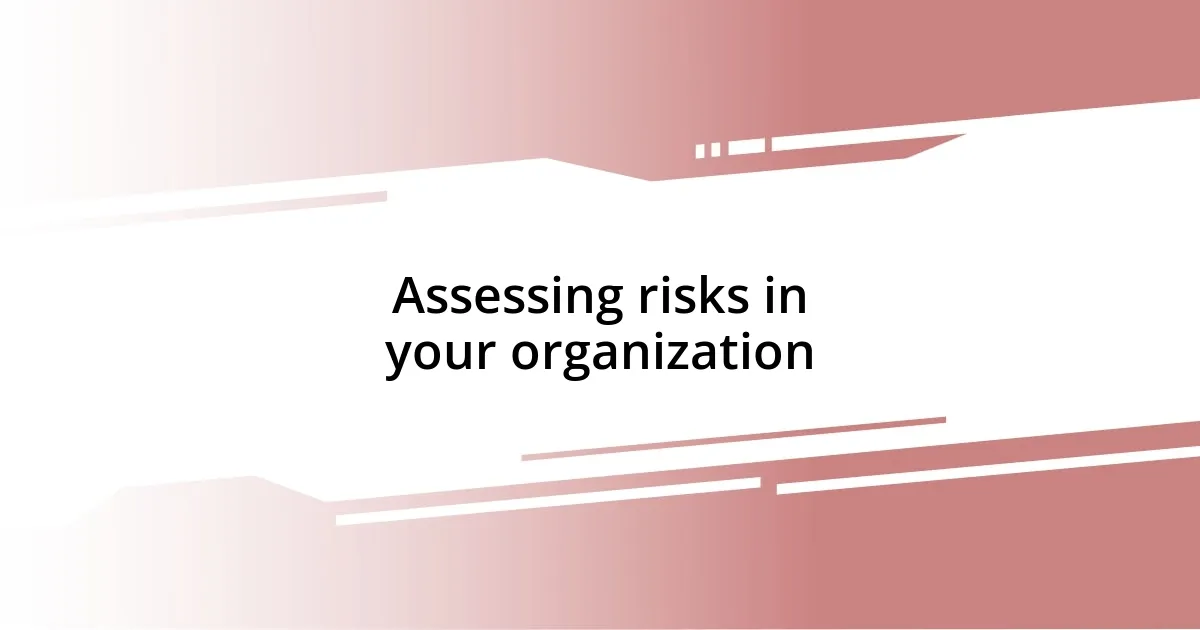
Assessing risks in your organization
Assessing risks in your organization starts with a thorough understanding of your environment. I recall my first experience conducting a risk assessment; it was both daunting and enlightening. We walked through our workspace, brainstorming every minor hazard that could disrupt our projects. This proactive approach shifted my perspective—suddenly, instead of fearing risks, I saw them as opportunities for improvement.
To streamline your risk assessment, consider focusing on these key areas:
– Identification: Gather input from team members across departments to pinpoint risks they face daily.
– Evaluation: Prioritize risks based on their potential impact and likelihood. I’ve found that engaging diverse perspectives often uncovers hidden risks that aren’t immediately apparent.
– Documentation: Maintain a clear record of all identified risks and evaluations to create a reference point for future assessments.
– Monitoring: Keep an eye on the identified risks over time, as they can evolve and require re-evaluation.
By actively involving your team in this process, you can build a shared sense of responsibility for risk management, transforming what once felt overwhelming into a collaborative effort.
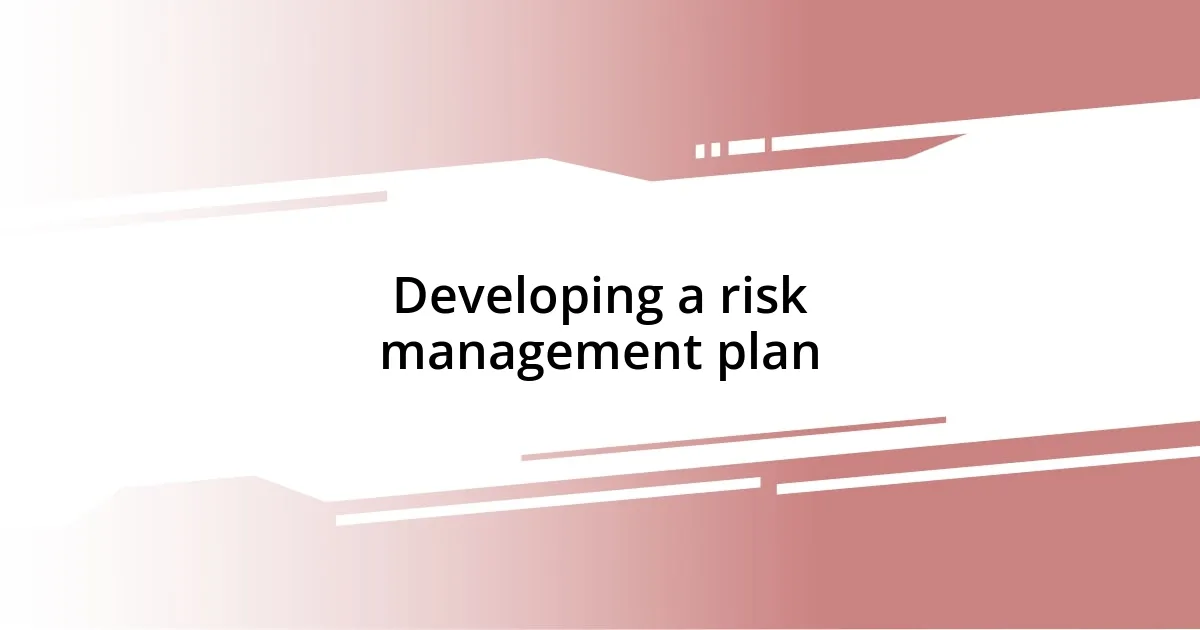
Developing a risk management plan
Developing a risk management plan is a vital step in navigating uncertainties. I remember the first time I crafted a risk management plan for a critical project; it felt like laying the foundation for a sturdy house before the storm hit. I learned quickly that an effective plan outlines risk identification, evaluation, mitigation strategies, and a clear communication process. It becomes a living document that not only supports decision-making but also provides reassurance to everyone involved.
Another crucial element to consider is that your risk management plan should be tailored to your specific context. One size doesn’t fit all. Reflecting on my experiences, I once worked on a software launch where unique industry risks like cyber threats and regulatory changes needed to be meticulously documented and addressed. I found that engaging stakeholders throughout this process helped in crafting a more comprehensive plan, as their insights often revealed risks I hadn’t initially considered.
Lastly, remember that developing a risk management plan isn’t a one-time task. It’s an ongoing dialogue. I’ve had moments where revisiting and revising the plan made all the difference. When unforeseen challenges arose during a project, my team and I could easily adapt our strategy, thanks to the groundwork we had already laid. Continuous monitoring and updates ensure that the plan remains relevant, allowing you to stay ahead of potential hurdles.
| Component | Description |
|---|---|
| Identification | Determining potential risks |
| Evaluation | Assessing the impact and likelihood |
| Mitigation | Developing strategies to address risks |
| Communication | Ensuring clarity among stakeholders |
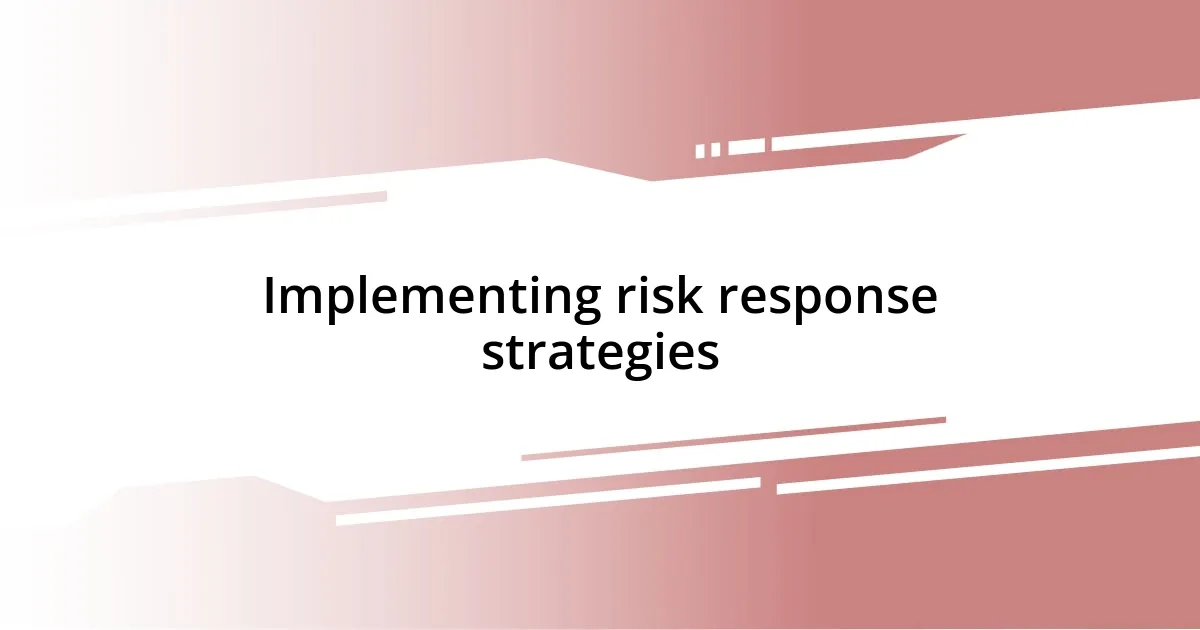
Implementing risk response strategies
Implementing risk response strategies can be incredibly insightful. I recall a time in a project where we faced a sudden budget cut. Instead of panicking, we gathered as a team to brainstorm alternative approaches. That collaborative spirit led us to identify cost-effective solutions that not only addressed the financial risk but also fostered innovation. When you involve your team in this way, you often unveil creative responses that you might not have considered alone.
One effective strategy I’ve found is to classify responses into different categories—such as avoidance, mitigation, transfer, or acceptance. By doing this, we can assess which strategy best aligns with the risk at hand. For instance, during a critical presentation, we had to mitigate the risk of technological failure. We ended up preparing a backup plan with physical presentation materials. This proactive measure not only eased my anxiety but also ensured that our message got through without a hitch.
It’s essential to remember that implementing these strategies is not just about managing risks; it’s also about building resilience. Embracing risk response strategies transformed my team’s culture from reactive to proactive. Have you experienced a risky situation that turned into a valuable learning opportunity? I know I have, and it’s moments like these that reinforce the importance of strong risk management practices.
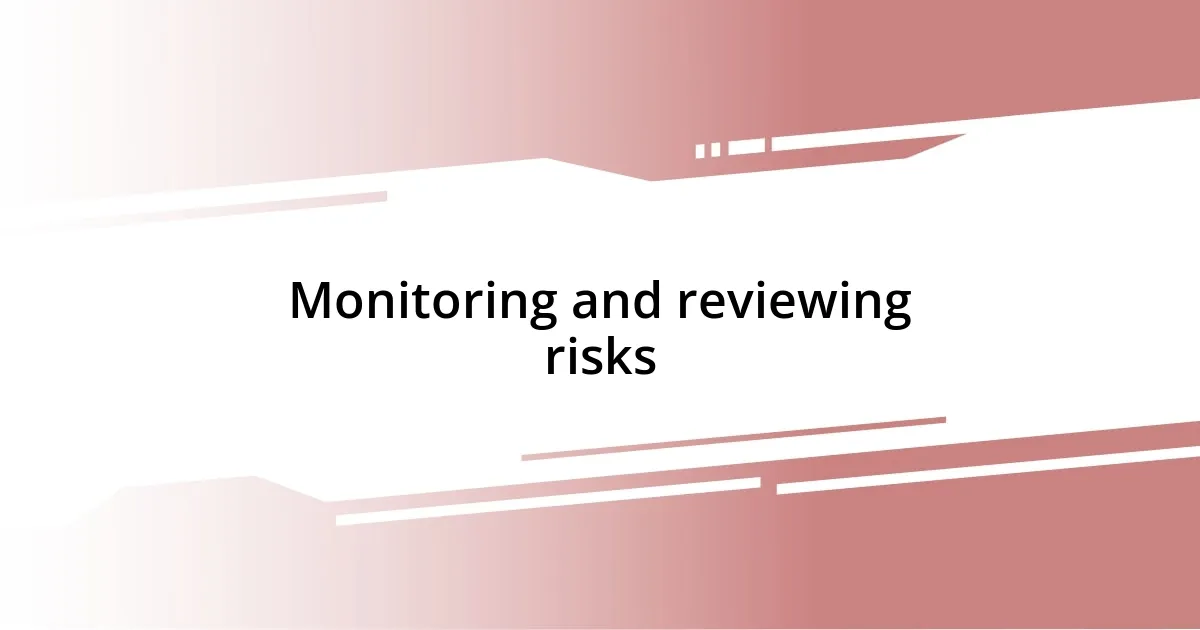
Monitoring and reviewing risks
One of the most critical aspects of monitoring and reviewing risks is the regular assessment of potential triggers. In my experience, I once managed a project where delays seemed inevitable due to external factors, like weather disruptions. By implementing weekly check-ins, I not only kept my team informed but also adjusted our timelines proactively. Have you ever felt the pressure of an unexpected hurdle? Those weekly reviews became my ally, fostering a sense of control in what felt like chaos.
As I grew more adept at monitoring risks, I realized the importance of data in this process. I developed a simple tracking system that visualized risk factors and their potential impacts. I fondly recall a time when a minor issue was flagged during a review; it turned out to be a small coding error that could have spiraled into a significant problem. By identifying it early, my team felt a rush of relief, knowing we had dodged a bullet. I often reflect on how pivotal those tools have been, turning potential disasters into manageable tasks.
Ultimately, it’s not just about what you observe but also how you respond to these insights. I’ve found that fostering an open dialogue with my team has transformed our risk management approach. When discussing risks openly, everyone feels invested in the outcome. Isn’t it incredible how a shared understanding can create a culture where risks are seen as opportunities for improvement? For me, each revision of our monitoring strategy becomes a stepping stone toward a more resilient organization.
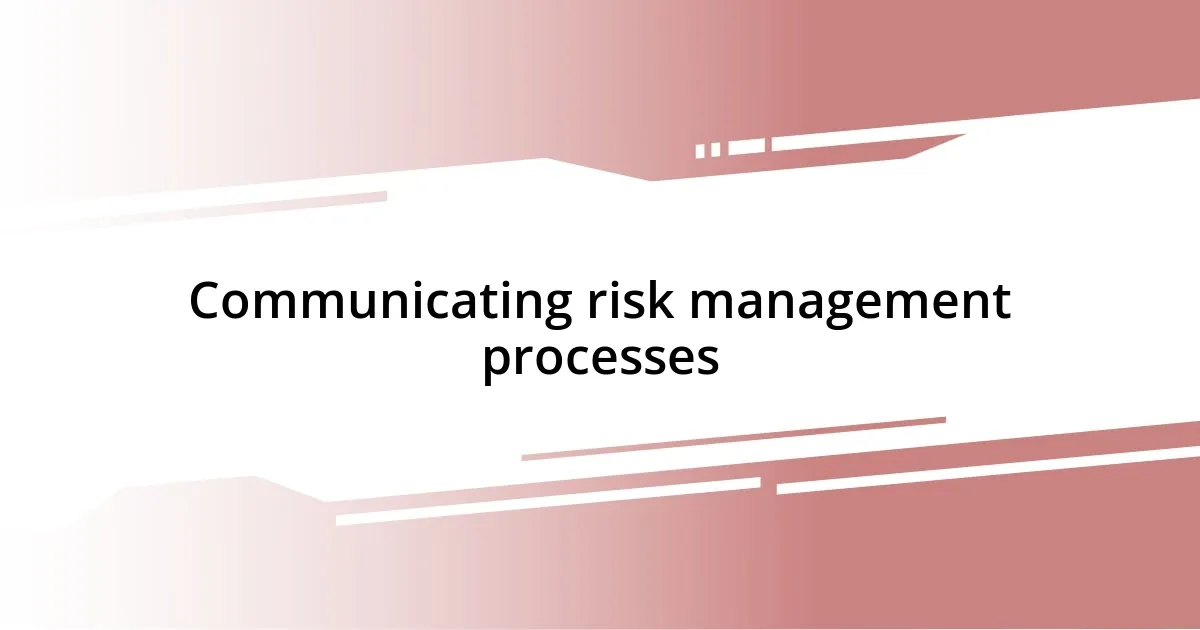
Communicating risk management processes
Communicating risk management processes is vital for fostering an environment where everyone feels informed and empowered. I remember a project where I facilitated a workshop focused on identifying potential risks. During this session, team members shared insights that I hadn’t considered, which reminded me of the value of open communication. Have you ever been surprised by the depth of knowledge your colleagues can offer? Those moments truly highlight the importance of collaboration in risk management.
In my experience, using visuals can significantly enhance how we communicate these processes. Once, I created a flowchart that laid out our risk management steps, making it easier for everyone to grasp the overall strategy. Seeing it on the wall transformed our approach, and it sparked lively discussions. Visual aids not only clarify the processes but also engage team members in a way that makes the topic less daunting. Isn’t it fascinating how a simple image can demystify complex ideas?
It’s also essential to maintain transparency when sharing information about risks. In a previous role, I introduced regular updates that summarized our risk status, allowing everyone to stay in the loop. I felt a palpable shift in team morale as my colleagues appreciated being part of the conversation. Could it be that fostering a culture of transparency is the key to proactive risk management? I believe, without a doubt, that by communicating effectively, we create a proactive environment where risks are viewed not as threats but as challenges we can tackle together.
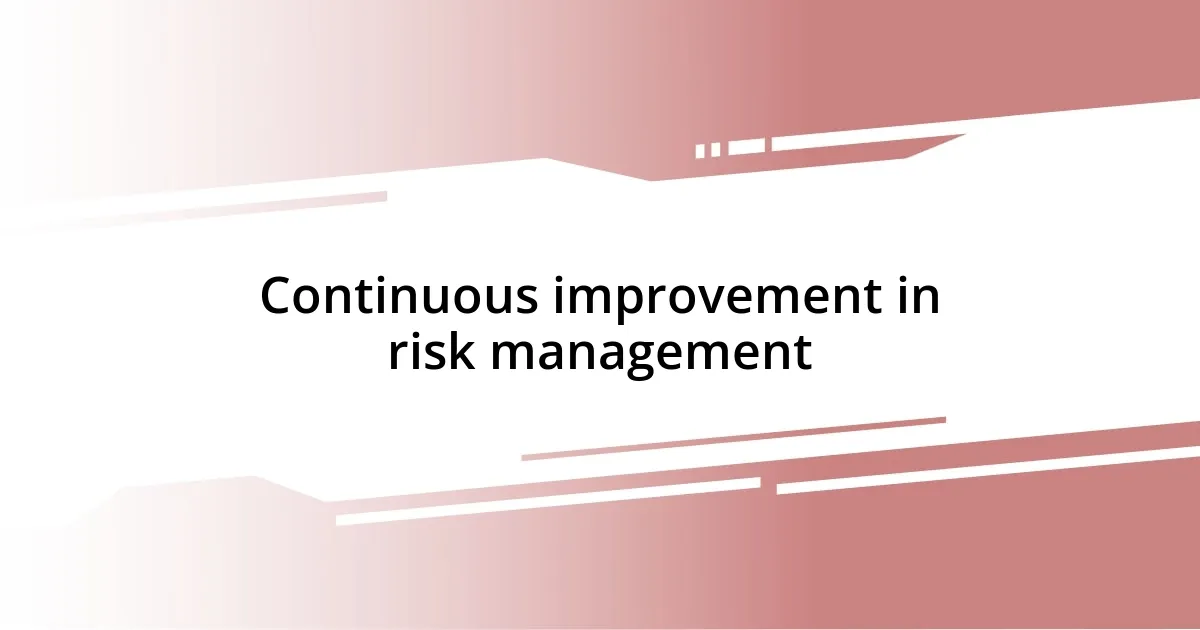
Continuous improvement in risk management
Continuous improvement in risk management is about embracing a mindset of learning and adaptation. I once encountered a situation in which our project hit a snag after a major product launch; feedback indicated that users were experiencing unexpected issues. This prompted us to conduct a thorough post-mortem analysis, allowing us to not only understand what went wrong but also to implement changes for future launches. How often do we pause to reflect on our experiences and grow from them? It was that moment of reflection that shifted my perception of risks from merely obstacles to opportunities for enhancement.
Another time, I initiated a feedback loop that encouraged everyone on my team to share their thoughts on our risk management practices. I was surprised by how many valuable suggestions emerged from this exercise—such as refining our risk assessment criteria and revising our response strategies. The experience taught me that listening is as crucial as any strategic plan. Isn’t it fascinating how turning our attention outward can uncover insights we never considered? Each piece of feedback helped refine our processes, creating a dynamic evolution in how we managed risks.
Moreover, I’ve found that technology plays a significant role in facilitating continuous improvement. For example, I adopted a risk management software that tracked our historical data and performance metrics. This decision allowed us to analyze trends over time, which revealed patterns I had previously overlooked. I often think about how empowering it felt to transform raw data into actionable strategies. Don’t you agree that leveraging data can enhance our understanding and decision-making in risk management? With every adjustment made through these insights, I felt a growing sense of resilience within my team—ready to face whatever came next.










